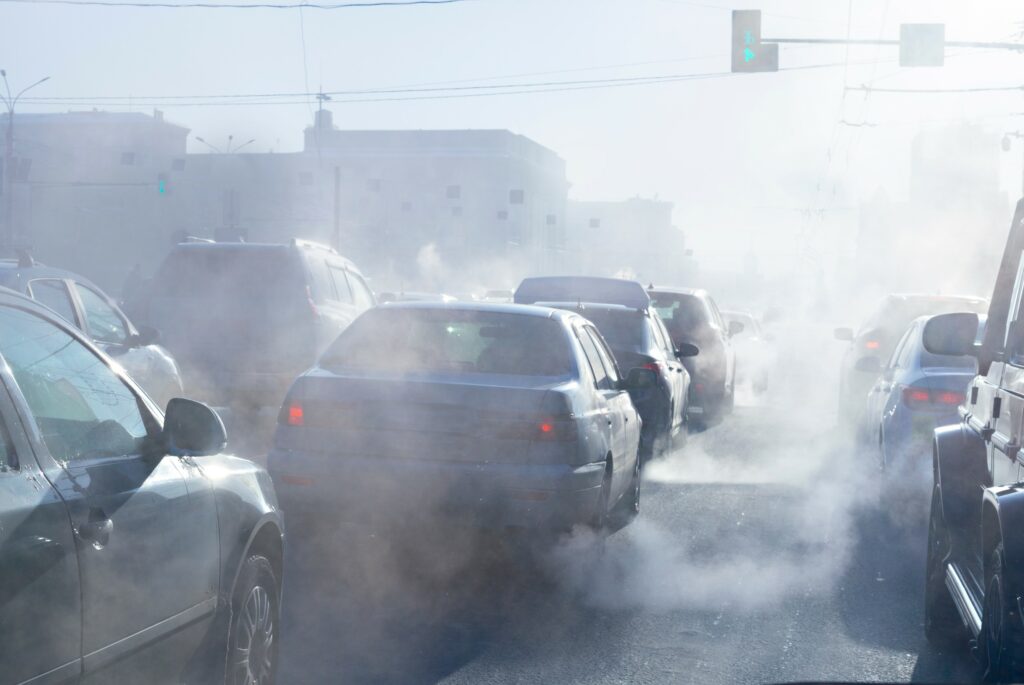
Heavy Rain, Flooding, and Chance of Severe Weather Staring Down the Southern U.S.
January 22, 2024
Posted: June 29, 2023 8:35 am





A new mass of smoke from the Canadian wildfires has filtered down into the northern tier of the U.S. this week, putting many American cities under smoky and hazy skies. What cities are experiencing poor air quality levels on Wednesday and when will the smoke leave the region? Here is the latest.
A large amount of smoke was swirling over parts of the Great Lakes and Midwest on Wednesday, visible on satellite images as well as to the naked eye. The position of the jet stream over Quebec has sent the wildfire smoke into this part of the U.S.
By late Wednesday morning, the most amount of smoke was centered over western Pennsylvania, Lake Erie, and throughout Ohio. Lower amounts of smoke was hovering over Michigan, Illinois, Kentucky, and the western half of New York state.
Residents in Pittsburgh woke up to their skyline shrouded in smoke on Wednesday morning. The city was experiencing some of the nation’s worst air quality on Wednesday with an air quality index rating (AQI) of 285 and headed upward.
Officials warn that AQI ratings over 250 may cause throat irritation and watery eyes to even the most healthy individuals after just a few minutes spent outside.
The AQI was even more hazardous in Cleveland, coming in at 307. Like Pittsburgh, the skyline in Cleveland also disappeared behind the haze early Wednesday. Forecasters warn that the AQI is expected to remain at dangerous levels through at least early Thursday in this part of the Great Lakes region.
New York Gov. Kathy Hochul told residents on Wednesday that they need to brace for more poor air quality conditions across the central and western portions of the state.
The governor tweeted that vulnerable groups needed to be particularly careful if spending time outside. The air quality is expected to deteriorate throughout the day Wednesday and into Thursday in this part of the country.
A change in the wind direction is expected to bring more smoke to cities such as Buffalo and into the interior portions of the Northeast and New England. The smoke may translate to reduced air quality levels by the end of the week for many of the major cities along the East Coast, including New York City and Philadelphia.

Milwaukee has been one of the worst hit cities this week. The city along the shores of Lake Michigan saw its worst air quality rating Tuesday at 5 pm local time, coming in with an AQI of 274.
A rating of this magnitude is considered to be “very unhealthy,” meaning that the conditions are dangerous even for healthy individuals. While air quality levels had improved by Wednesday morning in Milwaukee, the rating was still in the dangerous category.
Chicago saw its worst AQI rating during the mid-morning hours on Tuesday, coming in at 202. Detroit notched its highest rating at 9 pm Tuesday when it hit 268.
The smoke is filtering as far south as North Carolina and Georgia. As of Wednesday morning, air quality alerts were in place for 13 states. These alerts encompassed all of Iowa, Michigan, Wisconsin, and Delaware. More states are likely to be under alerts as the smoke moves east into New England.
While much has been said about the dangers of smoke to humans, it is also important to realize that your pets can also see these negative impacts. The exposure to this polluted air can trigger a number of allergies and respiratory issues in pets. The smoke may also worsen existing health conditions such as asthma.
Veterinarians recommend limiting outdoor activities for your pet when the AQI is under an unhealthy rating. You should also be aware of the symptoms of respiratory distress in your pet so that you can call a veterinarian if needed.
As bad as the AQI is in some parts of the U.S., conditions are even worse in Canada at the epicenter of the fires. The country is now officially experiencing its worst wildfire season on record with forecasters not offering much hope for relief in the near term.
According to the latest data from the Canadian Interagency Forest Fire Centre (CIFFC), over 19 million acres of land have been singed as of June 16. This breaks the past record of 17,559,303 acres burned in 1995. Since the beginning of May, the county has seen an average of 330,000 acres of land burned on a daily basis.
The province of Quebec has been hit the hardest with over 6.3 million acres burned this year. As of Tuesday, the CIFFC was monitoring 492 active fires across the nation, bringing the total number of blazes since the start of the season up to almost 3,000. Alberta was dealing with 89 active fires with Quebec battling 81 infernos.
The CIFFC also tracks the probable causes of these fires. The latest National Fire Situation Report said that 39 of the 53 fires started at the beginning of the week were caused by natural sources, largely at the hands of lightning strikes. Eight fires were started by humans.
A warmer and drier winter season for the country has laid the groundwork for fire development. In addition, human-induced climate change is also being blamed for the increase in wildfires this season.
The smoke is making the long journey across the Atlantic Ocean, now impacting parts of the Iberian Peninsula. Air quality levels were rated as unhealthy for sensitive groups throughout the bulk of Portugal and Spain. Smoke has also been reported over Ireland and southern England. Forecasters are predicting that the smoke could infiltrate more of Europe in the coming days.
Did you find this content useful? Feel free to bookmark or to post to your timeline for reference later.

January 21, 2024

January 19, 2024

January 18, 2024